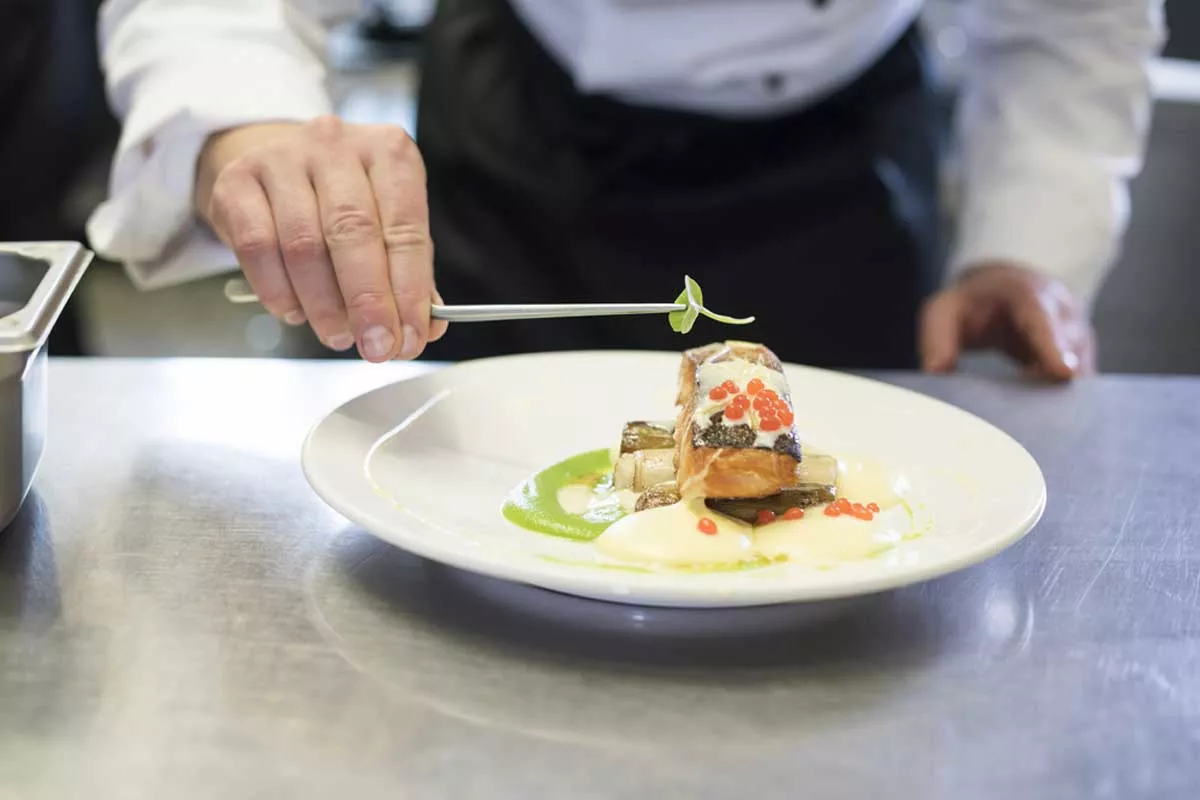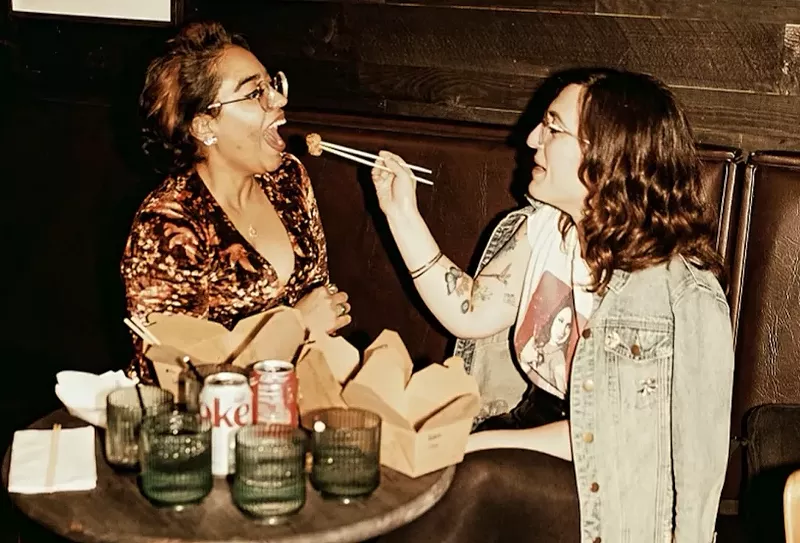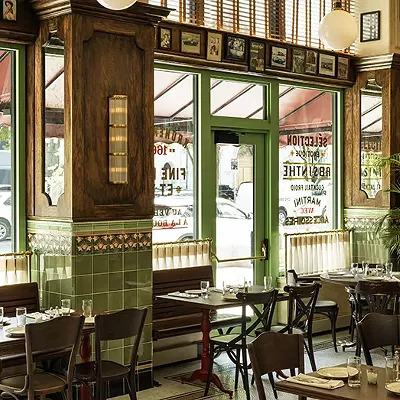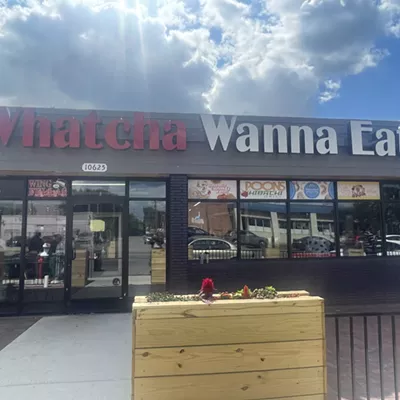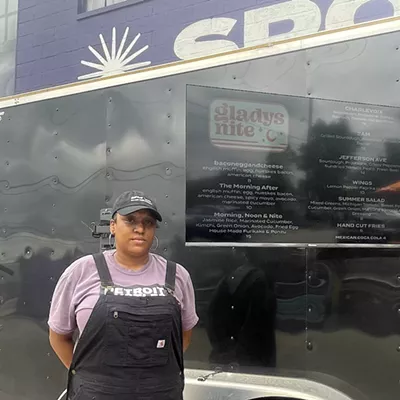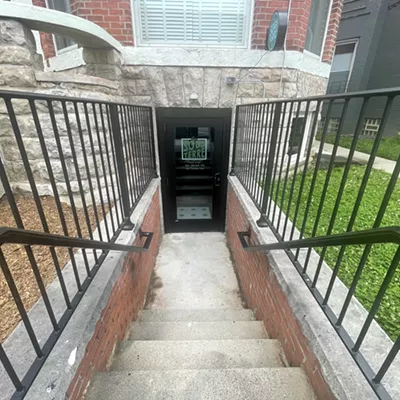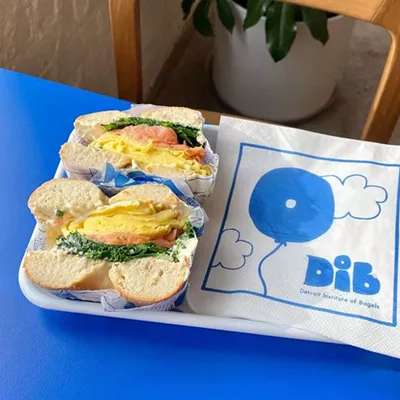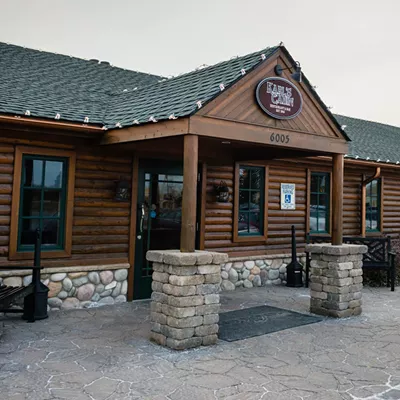The first words out of Charlie Trotter’s mouth on the night I met him lost me completely:
“This is a study in Axis venison,” he led right in after his introduction, focusing me and a clutch of co-workers on a plate of perfectly pink and exotic deer tenderloin. Trotter — a pantheon name among America’s all-time chef greats — had come to my workplace in Phoenix (a French fine dining palace) to participate in a fancy-schmancy dinner celebrating some of his contemporaries’ culinary celebrity. In the moment, Chef Trotter was conducting his part of pre-service; enlightening our service team on every aspect of the dish he was preparing for the evening’s extravaganza, and making his creation sound like a science project in the process. As he broke its elements down into almost molecular components, I marveled sarcastically to myself over how out-there over food this guy was. But that was Trotter. In those days, I had no idea who he was, or what cuisine on his level could rise to.
Last week and 30-plus years later, after reading an over-analyzing piece of advertorial tripe on a local fine dining destination, it occurred to me how the real high-end of the restaurant industry is getting about as long in the tooth as the glossy, shrinking city magazines making long-winded, Trotter-esque efforts to cover it for their high society, dwindled readerships and ad revenues. Catering to a thin-slivered demographic of silver spoon appetites for the most part, fine dining’s piece of the consumer popularity pie is wafer-thin. It’s no wonder why, since it offers what so few customers are currently buying into with their restaurant-going routines.
According to numbers provided by Brizo FoodMetrics, an online food industry market analysis service, less than 1% of restaurants across the U.S. and Canada are currently operating under the auspices of fine dining (price-fixed, chef’s tasting menus, wine pairings, etc.). Post-pandemic, 60% employ quick-service business models, while nearly 90% of all restaurant commerce is considered “inexpensive” compared to fine dining, by Brizo’s calculus.
Even so, don’t count me as someone who can’t appreciate the value in being treated to fine food and service. The opposite is true. The fact is, I made my living in fine dining for years. From my early ’90s exposure to Chef Trotter, I went on to serve under such ultra-high-caliber chefs as Christopher Gross, Michael De Maria, Ercolino Crugnale, Bradford Thompson, and Kevin Binkley in the luxe Scottsdale-Phoenix market. I seared foie gras just so in Crugnale’s kitchen, shaved white truffles in Mary Elaine’s five-diamond (AAA), five-star (Mobil) dining room while Chef Thompson waited for me at the kitchen door to re-weigh them afterward on a gram scale and measure my accuracy in portioning out so precious and pricy a delicacy, and I bought bottles for Binkley’s wine cellar at wholesale prices that exceeded by a decimal digit or two what the vast majority of us would be willing to spend retail on wine-loving best friends and family. More simply put, I’ve been there, done that, and made bank among the best of them. I’ve certainly no bone to pick with the food and beverage elite by those standards. I just think the days of prandial grandiosity are all but gone, and places where waist-coated “waiters” plunk-down unpriced menus and purse stools for the ladies and other frilly pretenses of such like are way past passe. Service elegance isn’t showcased only through extravagance. Most gracious food hospitality isn’t exclusive to fusty-feeling dining rooms dusted in finery. Gag us with that old silver spoon already. Enough’s enough.
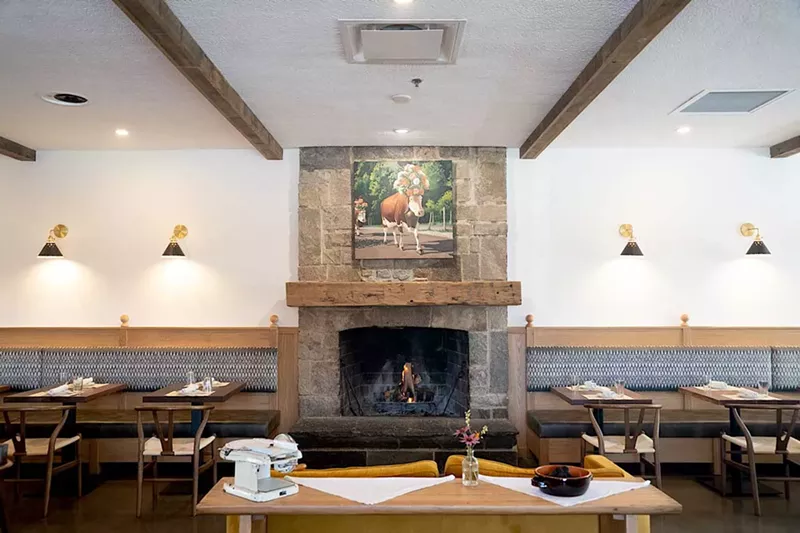
While I’d be wrong to declare fine dining dead, it’s time to at least start considering its probable, conceptual successors. Instead of predicting what will or won’t replace the current high-end vanguard, let me point to a specific business model performing most promisingly as a blueprint example of what future success in the upper tier, full-service segment of the industry might look like.
Since its launch last spring, Corktown’s Alpino seems to be setting an admirably high but eminently approachable new standard. The interior ambiance is getaway seductive as all get-out, transporting visitors to a virtual, Tyrolean lodge retreat high on some Alpine ledge one might wish never to come back down from once there. Offering a lofty yet laid-back experience fit for even the most worldly and well-traveled of epicurean seekers, Alpino’s food and beverage menu proffers its paean to such pleasures for a relative song. Sipping crisp, accessibly-priced wines from the Alsace, swirling Swiss fondue ($36) silked in cheeses elementally milked from mountain goats and cattle, and popping melt-in-your-mouth charcuterie meats cured far down-slope in Germany and Italy ($18), savvy proprietor David Richter’s guests sample something truly authentic, intentional, and broadly affordable, which seems right on target with the trajectory this writer sees “finer” but not fussy-fine dining taking into the near future. From now on, let’s slice far less caviar from the bellies of sturgeon mommas just for the sake of some expensive indulgence.
As for me, I’ll be having more of Alpino’s sustainably harvested Arctic Char at $34, Rye flour-crusted with mustard. And at $24, an all at once sophisticated and simple crock of grilled sausage simmered in a lightly-buttered onion and garlic broth (Diots Au Vin Blanc) buys me a quick ticket back into the old world kitchen my European grandmother once cooked in for me and mine, as does a priced-right and pickled Gurkensalat ($16) that harks back a similar kind of puckery summer cucumber salad she made. And from either the deeply resonating music library Richter pipes through the restaurant’s crystal-clear sound system or the eclectic live acts he hires to perform something apropos of metro Detroit zeitgeist, Alpino is delivering something that appears the package of what will play well to discriminating crowds of food entertainment enthusiasts for the foreseeable future.
Wherever you are, Chef Trotter, rest assured in the fine dining flame you certainly helped keep burning brightly. But now, I picture that torch passing.
Subscribe to Metro Times newsletters.
Follow us: Google News | NewsBreak | Reddit | Instagram | Facebook | Twitter

